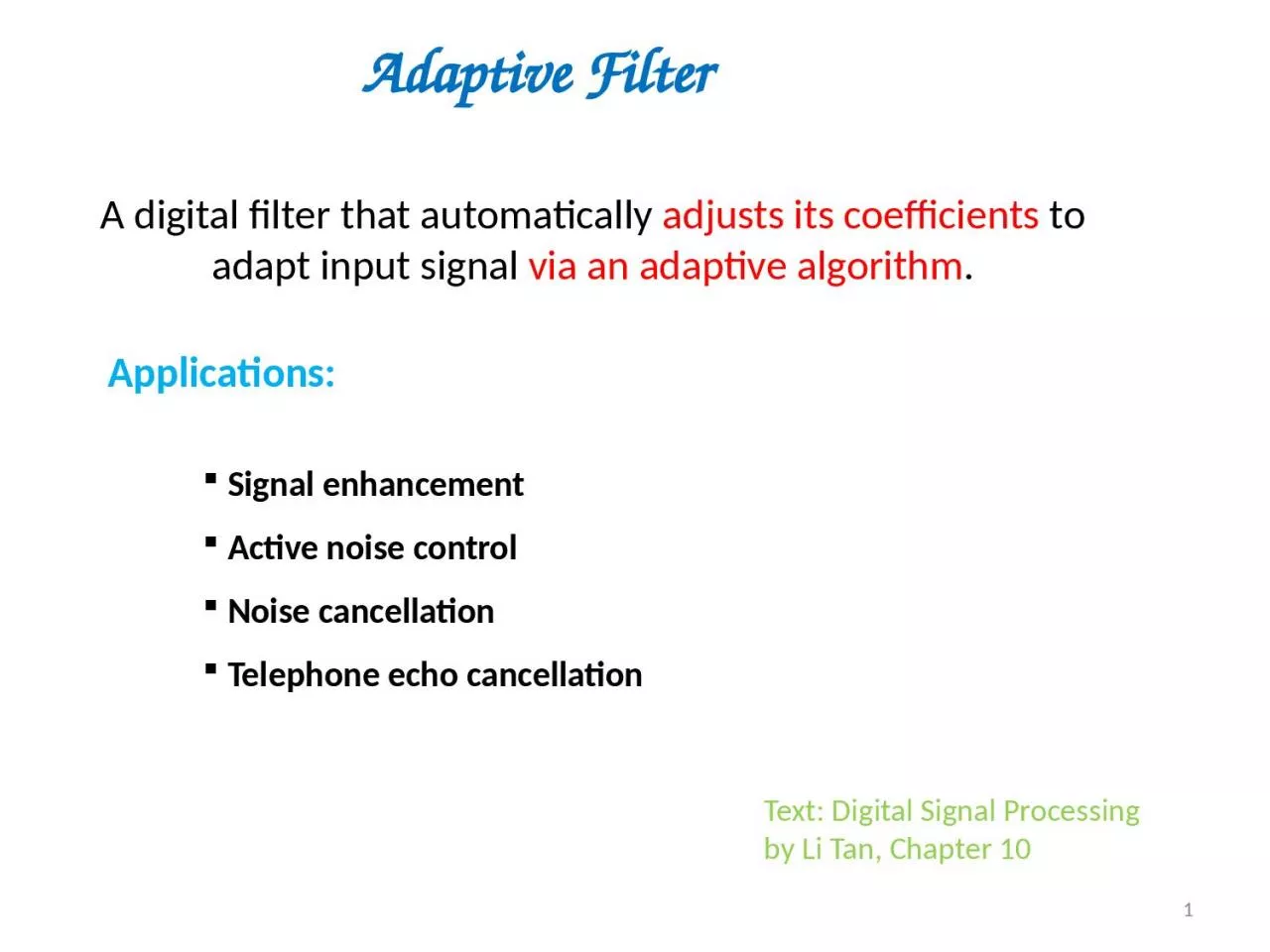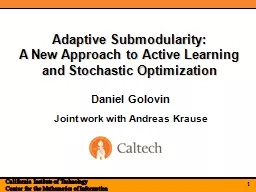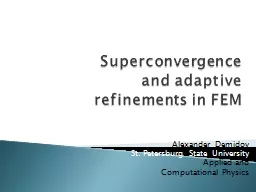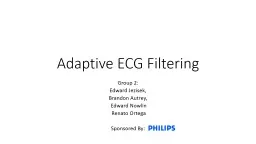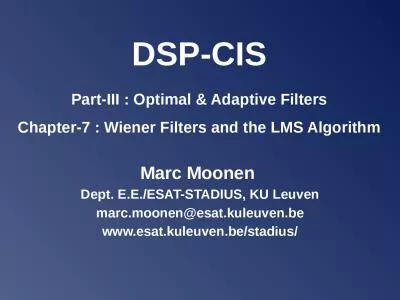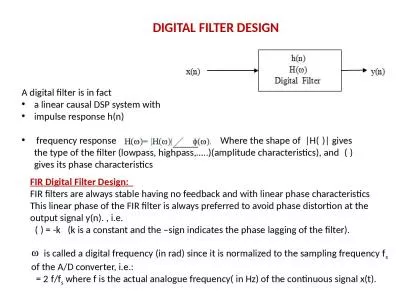PPT-Adaptive Filter A digital filter that automatically
Author : smith | Published Date : 2023-10-27
adjusts its coefficients to adapt input signal via an adaptive algorithm Applications Signal enhancement Active noise control Noise cancellation Telephone echo
Presentation Embed Code
Download Presentation
Download Presentation The PPT/PDF document "Adaptive Filter A digital filter that au..." is the property of its rightful owner. Permission is granted to download and print the materials on this website for personal, non-commercial use only, and to display it on your personal computer provided you do not modify the materials and that you retain all copyright notices contained in the materials. By downloading content from our website, you accept the terms of this agreement.
Adaptive Filter A digital filter that automatically: Transcript
Download Rules Of Document
"Adaptive Filter A digital filter that automatically"The content belongs to its owner. You may download and print it for personal use, without modification, and keep all copyright notices. By downloading, you agree to these terms.
Related Documents

